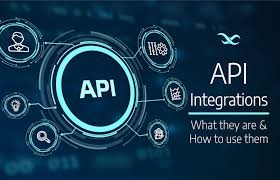Welcome to the world of A/B testing, where data-driven decision-making meets experimentation. In this comprehensive guide, we’ll explore the intricacies of designing and analyzing experiments using A/B testing. Whether you’re a marketer, product manager, or data analyst, understanding A/B testing can empower you to make informed decisions and optimize outcomes.
Understanding A/B Testing
A/B testing, also known as split testing, is a method of comparing two versions (A and B) of a webpage, email, or other digital assets to determine which performs better. Let’s delve into the key components of A/B testing:
- Formulating Hypotheses:
- Null Hypothesis (H0): No significant difference between versions.
- Alternative Hypothesis (H1): There is a significant difference favoring one version.
- Selecting Metrics:
- Primary Metrics: Key performance indicators (KPIs) relevant to the experiment’s goals.
- Secondary Metrics: Additional data points providing a holistic view of user behavior.
- Sample Size Determination:
Understand the importance of choosing an appropriate sample size to ensure statistical significance and the reliability of your results.
Designing A/B Experiments:
- Randomization:
- Ensure random assignment of users to each variant to minimize bias and create a comparable baseline.
- Control and Treatment Groups:
- Designate the control group (A) and the treatment group (B). The control group experiences the existing version, while the treatment group encounters the modified version.
- Duration of the Experiment:
- Determine the optimal duration to run the experiment, considering factors like seasonality and user behavior patterns.
Analyzing A/B Test Results:
- Statistical Significance:
- Use statistical tests, such as t-tests or chi-squared tests, to evaluate whether observed differences are significant.
- Confidence Intervals:
- Interpret results within confidence intervals to understand the range of potential outcomes.
- Practical Significance:
- Assess not only statistical significance but also the practical significance or impact on business goals.
Real-world A/B Testing Scenarios
- Website Redesign:
- Test different layouts, color schemes, or call-to-action buttons to optimize user engagement.
- Email Campaigns:
- Experiment with subject lines, content, or send times to enhance open rates and click-through rates.
- Product Features:
- Test the introduction of new features to measure their impact on user satisfaction and retention.
- Pricing Strategies:
- Analyze the effects of different pricing structures on conversion rates and revenue.
Ready to elevate your decision-making with A/B testing? Join our Tech academy to delve into the world of experimental design, statistical analysis, and optimization. From formulating hypotheses to interpreting results, acquire the skills to conduct impactful A/B tests. Start your journey today and harness the power of data-driven experimentation!
Related posts:
- Digitize Owerri Campaign: Digitizing Businesses in Owerri, Imo State Nigeria
- Cybersecurity vs Networking: Deciding Between Two Essential IT Specializations
- SOCIAL ENGINEERING ATTACKS: HOW TO RECOGNIZE AND DEFEND AGAINST THEM
- Exploring Blockchain in Cybersecurity: A Beginner’s Guide to Applications and Implications

